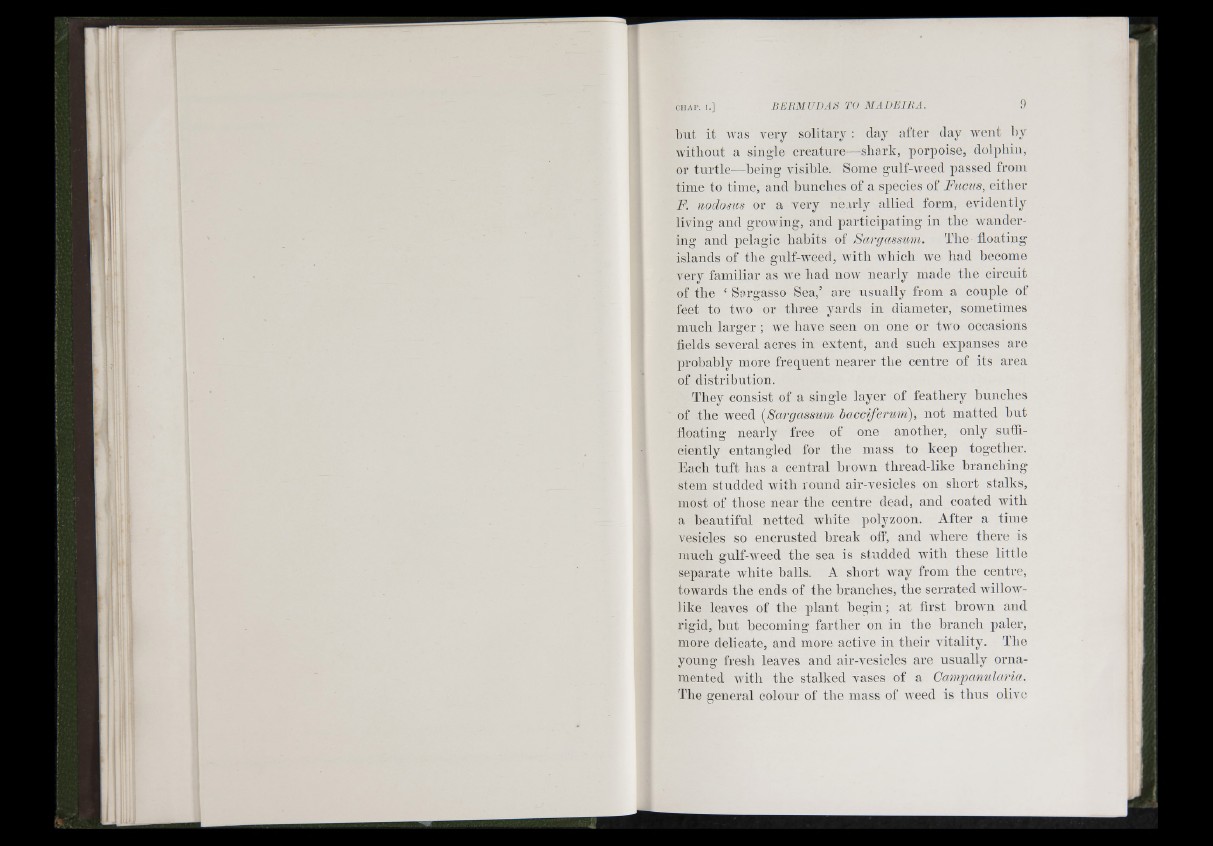
but it Avas very solitary : clay after day Aveiit by
Avitliout a single creature—shark, porpoise, dolphin,
or tu rtle—being Ausihle. Some gulf-Aveed passed from
time to time, and hunches of a species of Fucus, eitlier
F. noclosus or a very n e irly allied form, evidently
living and grovviiig, and participating in the Avander-
ing and pelagic habits of Sargassiim. The floating
islands of the gulf-AA^eed, Avith Avhlch AA’e had become
A^ery familiar as Ave had u o a v nearly made th e circuit
of the ‘ Sargasso Sea,’ are usually from a couple of
feet to two or three yards in diameter, sometimes
much larger ; aa’C have seen on one or tAvo occasions
fields several acres in extent, and such expanses are
probably more frequent nearer the centre of its area
of distribution.
They consist of a single layer of feathery hunches
of the weed [Sargasszim bacciferum), not matted h u t
floating nearly free of one another, only sutfi-
ciently entangled for the mass to keep together.
Each tu ft has a central hi oAvn thread-like branching
stem studded Avith round air-vesicles on short stalks,
most of those near the centre dead, and coated with
a beautiful netted white polyzoon. After a time
vesicles so encrusted break off, and AAdiere there is
much gulf-weed the sea is stndded AAuth these little
separate Avhite balls. A short AAmy from the centre,
toAvards the ends of the hranclies, the serrated aauUoaA'-
Hke leaves of the plant begin; at first hroAvn and
rigid, hut becoming farther on in the branch paler,
more delicate, and more active in their vitality. The
young fresh leaves and air-vesicles are usually ornamented
AAuth the stalked vases of a Campamdaria.
The general colour of the mass of Aveed is thus olive •i ir /
xr